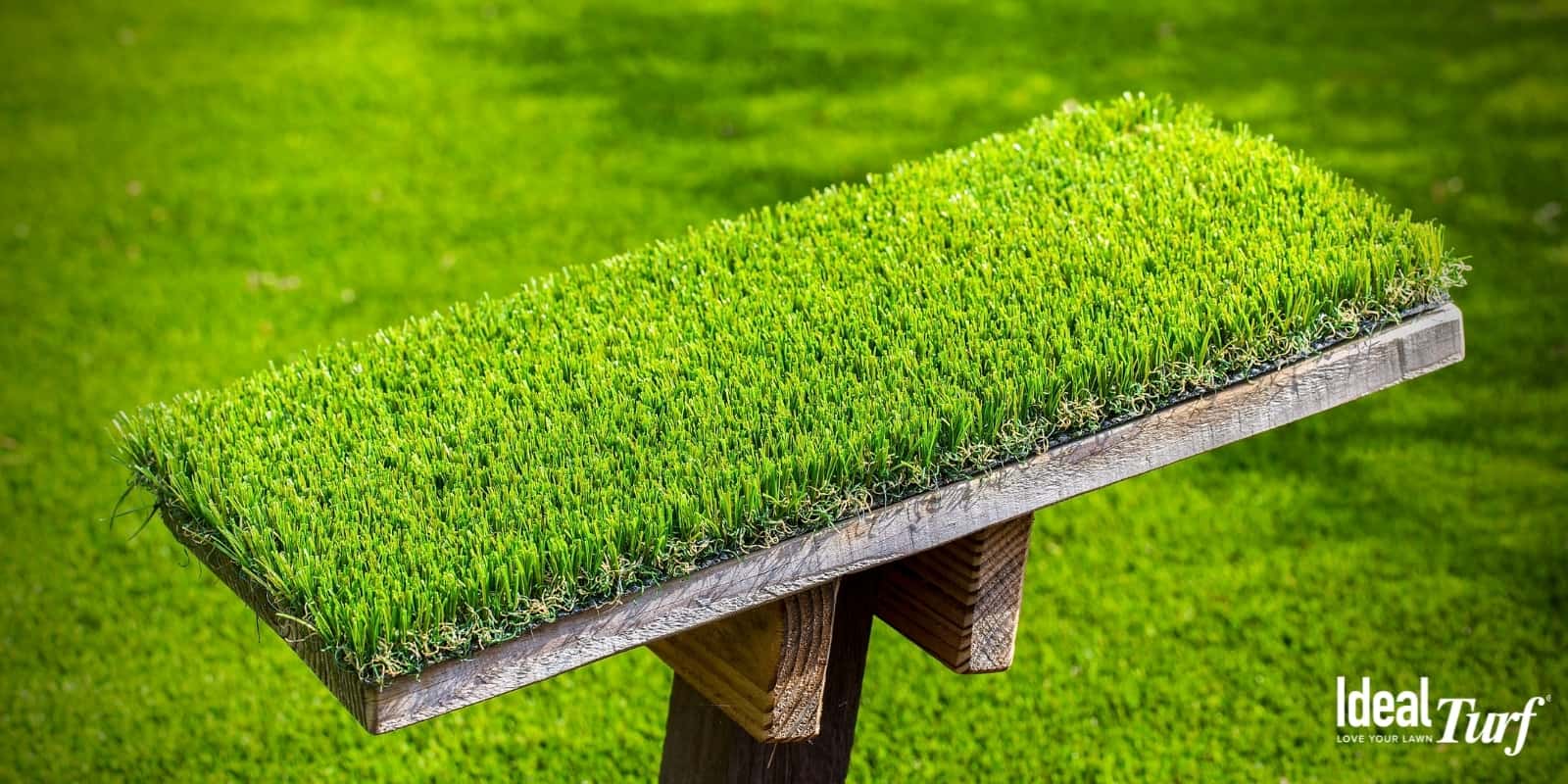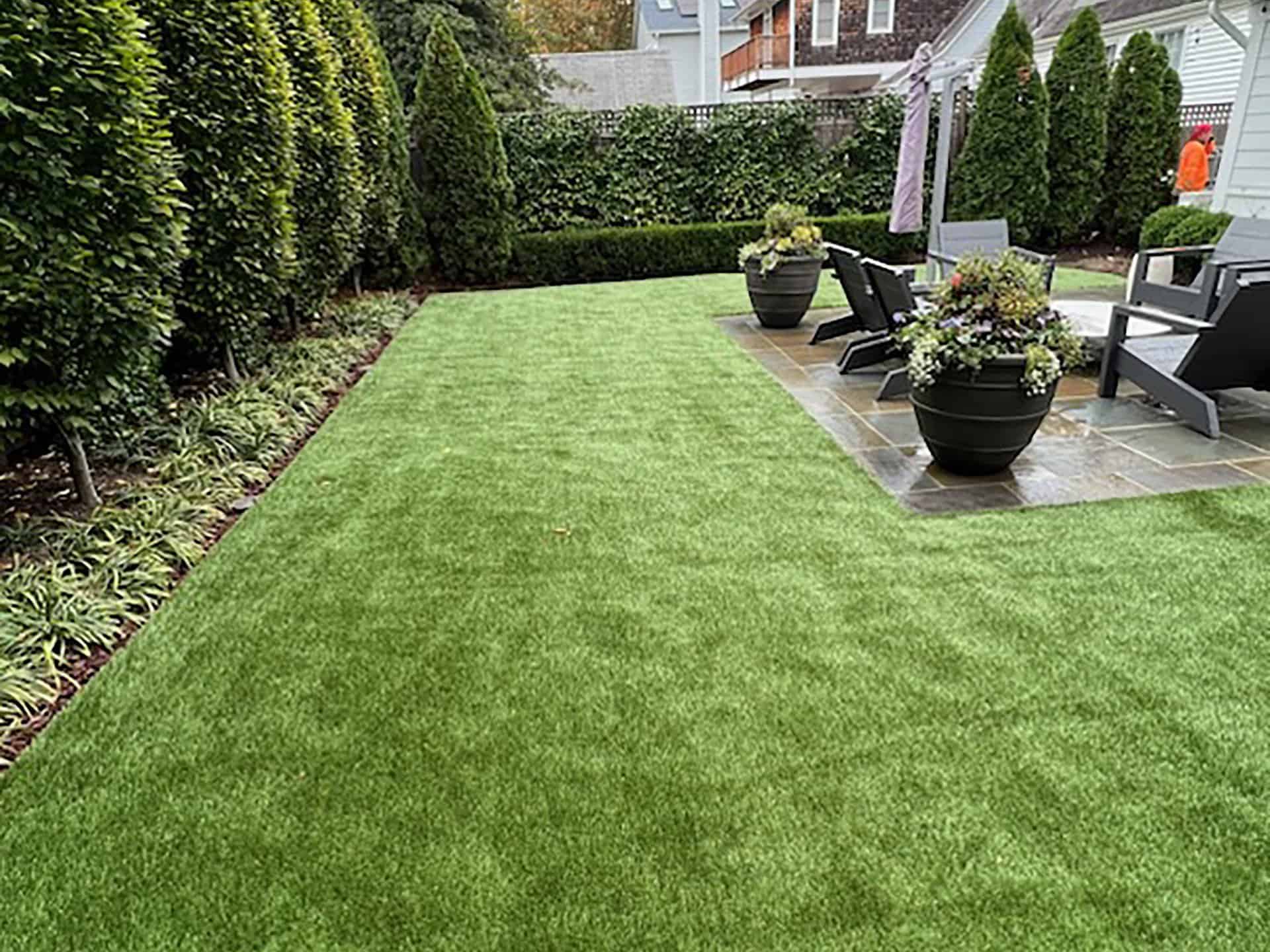Delve Into the Environmental Advantages of Opting for Artificial Turf Solutions
The adoption of synthetic grass services presents an engaging chance to attend to pressing environmental difficulties. By dramatically lowering water use and reducing the application of hazardous chemicals, these options not only advertise sustainable landscaping yet likewise safeguard local environments. The lower carbon impact linked with decreased upkeep activities adds to a much more lasting strategy to land administration. However, the implications of these benefits expand beyond mere conservation initiatives, increasing inquiries regarding their lasting influence on environment preservation and general ecological equilibrium. Checking out these measurements reveals a complicated interaction worth considering.
Water Conservation Perks
One of the most considerable benefits of synthetic turf is its capacity to save water. In contrast, artificial turf does not require watering, dramatically minimizing the overall need for water resources.
By eliminating the demand for normal watering, synthetic grass adds to sustainable landscape methods and aids mitigate the environmental influence of excessive water usage. The preservation of water extends to the decrease of runoff, which can lead to dirt disintegration and river pollution.
Furthermore, the installment of synthetic grass enables property owners and communities to allot water sources extra successfully, concentrating on vital uses such as drinking water and agriculture. The shift towards synthetic grass not just promotes responsible water usage but additionally straightens with more comprehensive ecological goals targeted at maintaining natural deposits.
As communities increasingly focus on sustainability, the water preservation benefits of synthetic grass offer a compelling situation for its adoption in property and industrial landscape design jobs.
Decreased Chemical Usage
The change to synthetic grass substantially reduces the dependence on chemical therapies commonly made use of in all-natural turf upkeep. Standard turf management typically entails the application of plant foods, herbicides, and pesticides to advertise development and control bugs. These chemicals can present threats to human wellness, local wildlife, and the atmosphere, adding to dirt and water contamination.
On the other hand, man-made lawn removes the demand for these unsafe substances. As soon as set up, it needs marginal upkeep, largely consisting of routine cleansing and infrequent infill replenishment. This reduction in chemical use not just benefits the immediate atmosphere yet also adds to wider ecological stability. By lessening the launch of synthetic compounds right into the ecosystem, fabricated turf promotes healthier dirt and water systems.
In addition, the lack of chemical runoff related to man-made grass installments aids protect local waterways from pollution, supporting marine life and maintaining biodiversity. Turf installation phoenix az. As communities significantly prioritize lasting techniques, going with artificial turf provides a feasible remedy that lines up with environmental conservation goals. Through this change, homeowner can take pleasure in lavish environment-friendly areas without jeopardizing ecological wellness, paving the method for a more lasting future
Lower Carbon Impact

In addition, the installation of synthetic grass can result in considerable water preservation. All-natural lawns need significant quantities of water for watering, which not only adds to the carbon impact connected with water removal and treatment however also strains local water resources. On the other hand, fabricated turf needs minimal maintenance, needing no watering, therefore considerably minimizing water use and its linked power costs.
Additionally, the durability of man-made lawn adds to its reduced carbon effect. With a life-span of up to 15 years or more, the requirement for constant substitutes is diminished, leading to less waste and reduced power usage in production and throwing away standard grass options. On the whole, synthetic grass presents a lasting option for environmentally conscious landscape design.
Environment Preservation
Habitat conservation is a critical factor to consider in the debate over landscape design selections, specifically when contrasting fabricated grass to all-natural lawn. All-natural lawn yards usually call for substantial maintenance, consisting of making use of fertilizers, herbicides, and chemicals, which can detrimentally affect local ecosystems. These chemicals can seep into the dirt and waterways, damaging native vegetation and fauna and disrupting neighborhood habitats.
Artificial turf gets rid of the need for harmful chemicals, thus safeguarding close-by wild animals my review here and preserving the integrity of bordering communities. The setup of man-made turf can lead to the conversion of previous lawn locations right into even more biodiverse landscapes, such as pollinator gardens or indigenous plant areas, which can support local wildlife.
Eventually, the shift to synthetic grass not just preserves water and reduces upkeep initiatives yet likewise cultivates a more unified relationship between human tasks and the natural surroundings, promoting environment conservation while doing so.
Long-Term Sustainability
Long-term sustainability is a vital consider assessing the benefits of synthetic grass over traditional lawn lawns. Among the most significant benefits of synthetic grass is its resilience; it can last as much as 15-20 years with very little maintenance, whereas all-natural yard needs constant reseeding and replacement. This long life reduces the demand for continuous sources, such as water, fertilizers, and pesticides, which are vital for maintaining a healthy and balanced yard lawn.
Furthermore, synthetic grass contributes to a reduction in carbon discharges related to yard care tools. Conventional grass frequently need gas-powered lawn mowers, leaners, and blowers, every one of which add to air contamination. Arizona artificial turf. On the other hand, synthetic grass removes the demand for such equipment, promoting a cleaner environment
Furthermore, the manufacturing of synthetic grass increasingly makes use of recycled products, enhancing its sustainability account. As suppliers adopt environment-friendly practices, the environmental footprint of synthetic grass remains to lessen.

Verdict
The adoption of man-made grass options presents substantial ecological benefits, including considerable water conservation, reduced reliance on harmful chemicals, and a lower carbon footprint. Fabricated grass help in protecting natural habitats by decreasing land disruption and promoting long-lasting sustainability with the use of durable products. Jointly, these elements emphasize the capacity of synthetic grass to add positively to environmental health and provide a feasible choice to conventional landscaping techniques in a significantly resource-conscious world.
In comparison, artificial lawn does not need watering, dramatically decreasing the overall demand for water sources. By decreasing the release of artificial compounds into the community, synthetic lawn promotes healthier dirt and water systems.
Moreover, the installment of fabricated grass can result in significant water preservation. In contrast, artificial turf needs marginal maintenance, needing no watering, thus dramatically decreasing water use and its connected energy prices.
